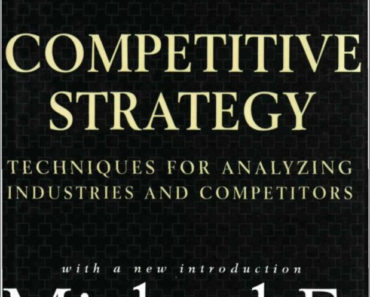Change Can Be Easy (and Fun)
Tiny is mighty.
At least when it comes to change.
Over the last twenty years, I’ve found that most everyone wants to make
some kind of change: eat healthier, lose weight, exercise more, reduce
stress, get better sleep. We want to be better parents and partners. We want
to be more productive and creative. But the alarming levels of obesity,
sleeplessness, and stress reported by the media—and seen in my Stanford
lab’s research—tell me there is a painful gap between what people want and
what they actually do. The disconnect between want and do has been
blamed on a lot of things—but people blame it on themselves for the most
part. They internalize the cultural message of “It’s your fault! You should
exercise more, but you aren’t doing it.
Shame on you!”
I am here to say: It isn’t your fault.
And creating positive change isn’t as hard as you think.
For too many years, myths, misconceptions, and well-meaning but
unscientific advice have set you up to fail. If you’ve attempted change in
the past and haven’t seen results, you may have concluded that change is
hard or that you can’t succeed because you lack motivation. Neither is
accurate. The problem is with the approach itself, not with you. Think of it
this way: If you tried putting together a chest of drawers with faulty
instructions and parts missing, you would feel frustrated. But you probably
wouldn’t blame yourself for this, would you? You would blame the
manufacturer instead. When it comes to failed attempts at change, we
almost never blame the “manufacturer.” We blame ourselves.
When our results fall short of our expectations, the inner critic finds an
opening and steps on stage. Many of us believe that if we fail to be more
productive, lose weight, or exercise regularly then something must be
wrong with us. If only we were better people, we wouldn’t have failed. If
only we had followed that program to the letter or kept those promises to
ourselves, we would have succeeded. We just need to get our act together
and pull ourselves up by our bootstraps and do better. Right?
Nope. Sorry. Not right.
We are not the problem.
Our approach to change is. It’s a design flaw—not a personal flaw.
Building habits and creating positive change can be easy—if you have the
right approach. A system based on how human psychology really works. A
process that makes change easier. Tools that don’t rely on guesswork or
faulty principles.
Popular thinking about habit formation and change feeds into our
impulse to set unrealistic expectations. We know habits matter; we just need
more good habits and fewer bad ones. But here we are, still struggling to
change. Still thinking it’s our fault. All my research and hands-on
experience tell me that this is exactly the wrong mindset. In order to design
successful habits and change your behaviors, you should do three things.
Stop judging yourself.
Take your aspirations and break them down into tiny behaviors.
Embrace mistakes as discoveries and use them to move forward.
This may not feel intuitive. I know it doesn’t come naturally to everyone.
Self-criticism is its own kind of habit. For some people, blaming yourself is
just where your brain goes—it’s like a sled in the snow, slipping into a wellworn path down the hill.
If you follow the Tiny Habits process, you’ll start taking a different route.
Snow will quickly start covering those self-doubting grooves. The new path
will soon be the default path. This happens quickly, because with Tiny
Habits you change best by feeling good—not by feeling bad. The process
doesn’t require you to rely on willpower, or set up accountability measures,
or promise yourself rewards. There is no magic number of days you have to
do something. Those approaches aren’t based on the way habits really
work, and as a result, they aren’t reliable methods for change. And they
often make us feel bad.
This book says good-bye to all that change angst and—even more
important—shows you how to easily and joyfully bridge the gap (no matter
the size) between who you are now and who you want to be. Tiny Habits
will be your guide to disrupting the old approach and replacing it with an
entirely new framework for change.
The system I’ll share with you is not guesswork. I’ve road tested the
process with more than 40,000 people during years of research and
refinement. By coaching all these people personally and gathering data
week by week, I know that the Tiny Habits method works. It replaces
misunderstandings with proven principles, and it trades prescriptions for
process. You’ll take what the cofounder of Instagram, my former student,
learned about human behavior to design a breakthrough app, and you’ll use
the same methods to create breakthrough changes in your own life—and the
lives of others. And best of all, you get to have fun. Once you remove any
hint of judgment, your behavior becomes a science experiment. A sense of
exploration and discovery is a prerequisite to success, not just an added
bonus
Tiny Habits By Bj Fogg
- INTRODUCTION Change Can Be Easy (and Fun) Tiny is mighty. At least when it comes to change. Over the last twenty years, I’ve found that most everyone wants to make some kind of change: eat healthier, lose weight, exercise more, reduce stress, get better sleep. We want to be better parents and partners. We want to be more productive and creative. But the alarming levels of obesity, sleeplessness, and stress reported by the media—and seen in my Stanford lab’s research—tell me there is a painful gap between what people want and what they actually do. The disconnect between want and do has been blamed on a lot of things—but people blame it on themselves for the most part. They internalize the cultural message of “It’s your fault! You should exercise more, but you aren’t doing it.





